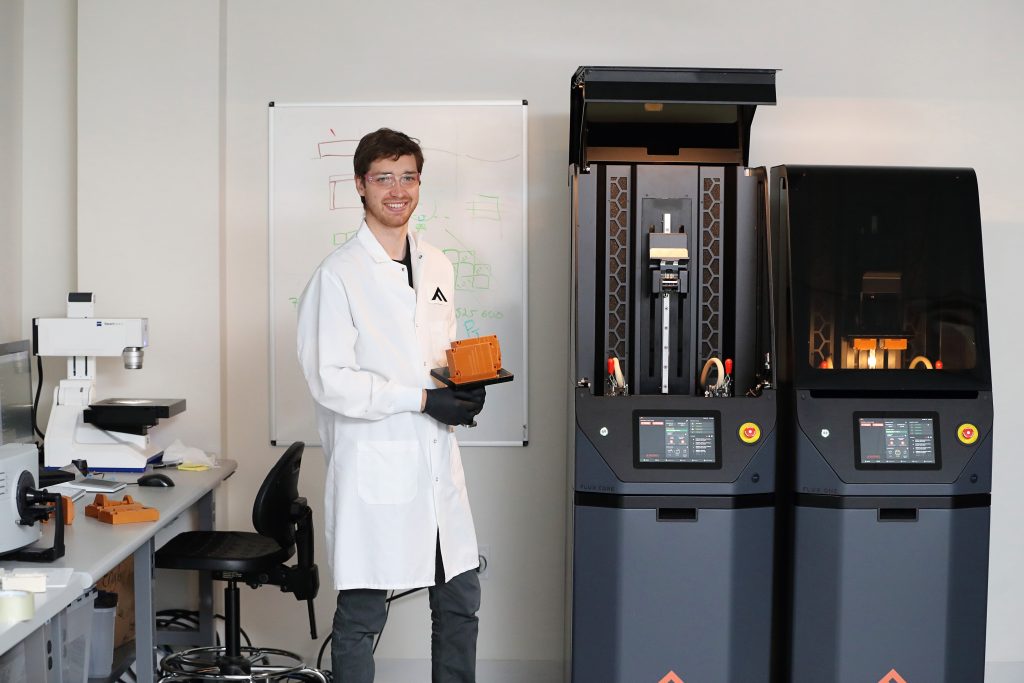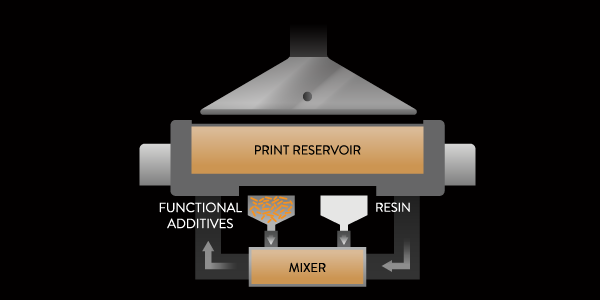Fortify, a Boston-based composite 3D printer manufacturer, has partnered with engineering materials developer Rogers Corporation to advance the 3D printing of radio frequency (RF) electronics.
Together, the partners will work to offer customers low-loss, high-frequency dielectric materials compatible with Fortify’s Continuous Kinetic Mixing (CKM) 3D printing technology. The partnership will see users able to 3D print custom precision substrates, Luneburg-like Gradient Refractive Index lenses, and end-use components for wireless devices.
“As our world becomes increasingly connected, so does the need for faster and higher capacity wireless connections,” explains Trevor Polidore, New Product Development Group Leader at Rogers Corporation. “Partnering with Fortify will allow Rogers to deliver a complete solution for the manufacturing of 3D printed dielectric components, enabling our customers to create the next generation of wireless systems.”

3D printing our wireless world
Today’s consumer devices are increasingly making use of active antenna systems (AAS) for communications. The technology has the ability to send out highly directive signals that can be modified electronically, while also forming a wide variety of beam patterns. These benefits are what make AAS suitable for the most-cutting edge communication applications such as 5G and high-throughput satellites, which were previously impossible using conventional antennas.
Unfortunately, AAS devices are still relatively expensive and difficult to manufacture, with inevitable performance tradeoffs when scaled down to consumer sizes. Fortify and Rogers claim it is possible to rise to these challenges with the use of 3D printing and dielectric materials, but these materials have historically been difficult to process with end-use quality and repeatability.
“The photopolymers available today are an order of magnitude more lossy than thermoplastics, yet 3D printing complex parts at scale out of thermoplastics is time consuming,” adds Phil Lambert, Sr. Applications Engineer at Fortify. “With the right low-loss material systems from Rogers combined with Fortify’s printers, we can offer a solution that provides excellent feature resolution, great RF properties, and high throughput capabilities for end-use parts.”

Continuous Kinetic Mixing with Fortify
Fortify’s CKM technology is a form of composite DLP 3D printing. The process works by uniformly distributing functional additives in photopolymer resins, resulting in filled and fiber-reinforced parts. The high-throughput technology is able to achieve fine features using heavily-loaded, viscous resins, which traditional DLP platforms are known to struggle with. Featured in all of Fortify’s Flux Series 3D printers, CKM will enable customers to print with the partners’ upcoming low-loss dielectric materials.
“With Rogers, we are positioned to commercialize the first scalable, low-loss 3D printed RF dielectric materials,” adds Josh Martin, CEO and Co-founder of Fortify. “This partnership is a great example of how innovative materials and technology companies can come together and provide a differentiated value proposition to a rapidly growing market.”
According to the partners, users will be provided with a scalable method of manufacturing RF components made of continuously varying dielectric materials. This will give rise to lightweight, geometrically-complex, wide bandwidth devices for applications in 5G, surveillance, remote sensing, and security.

As well as functional upgrades, additive manufacturing with composite materials allows for a whole host of mechanical improvements to parts. Continuous Composites, a developer of composite 3D printing technology, recently partnered with the US Department of Defense (DoD) to 3D print multifunctional composite wing structures for low-cost unmanned aircraft. The structures are set to combine light weight with high strength, while also offering cost-effectiveness.
Elsewhere, 3D printer manufacturer Impossible Objects recently entered a joint development agreement with Owens Corning, a provider of industrial building materials, to develop specialized composite materials for 3D printing. Set to be used with Impossible Objects’ composite-based additive manufacturing (CBAM) process, the fiberglass composites will enable parts with high strength-to-weight ratios and excellent chemical resistances.
Subscribe to the 3D Printing Industry newsletter for the latest news in additive manufacturing. You can also stay connected by following us on Twitter, liking us on Facebook, and tuning into the 3D Printing Industry YouTube Channel.
Looking for a career in additive manufacturing? Visit 3D Printing Jobs for a selection of roles in the industry.
Featured image shows the Fortify FLUX Series 3D printer lineup. Photo via Fortify.



